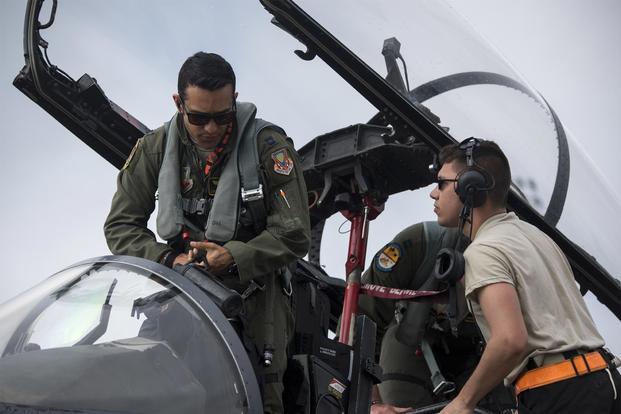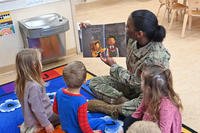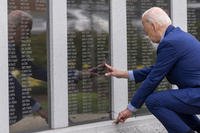The U.S. Air Force is experimenting with a new chain-of-command structure in which squadron commanders report directly to the wing commander, removing group commanders and vice commanders from the process, according to Air Combat Command.
The experiment, initiated by ACC commander Gen. Mike Holmes, will start this month at the 366th Fighter Wing at Mountain Home Air Force Base, Idaho, according to a service announcement Friday.
"Although the experiment changes the rank and positions of unit personnel, it does not add or subtract from the number of airmen assigned to Mountain Home," the release said.
"This experiment is about our desire to improve lethality and create an environment where leaders are empowered to lead and squadron personnel can focus on their core missions," Holmes said in the release. "This concept should flatten the decision-making structure within wings to encourage faster, decentralized decision-making and to remove some duties from our front-line units."
Related content:
- Despite Shortage, Air Force Likely Won't Boost Enlisted Pilot Ranks
- SpecOps, CSAR Alignment Right if it Makes Force More Lethal: General
- Air Force Creates Office to Help It Shake Up Acquisition Process
The experiment is planned to run for two years.
The new reporting structure removes group and vice commanders, but two deputy commanders will "advise and assist the wing commander in guiding and evaluating squadron operations, as well as supporting and deconflicting squadron-level decisions," officials said.
The service in recent months has aimed to reduce red tape throughout its organizational structure in order to hear ideas from lower-ranking airmen and remove bureaucratic practices that may stifle the force.
In the latest move, ACC said the wing's overarching Aircraft Maintenance Squadron also will be reapportioned, creating instead aircraft maintenance units to align with each fighter squadron.
The 366th will adopt an "Air Staff" at higher levels to act as liaisons on issues associated with organizing, training and equipping forces, should they need to elevate decisions, the release explains. The service said the structure mimics that of major commands, Air Force headquarters and joint staffs for functional support of unit operations.
"This experiment is aimed at revitalizing our squadrons by allowing them to focus on the mission while pushing administrative duties to a wing staff," said Col. Joseph Kunkel, 366th Fighter Wing commander.
"This puts decision-making authority and accountability for the mission at the squadron level. That's where we need it to be to build the squadrons and leaders we need for tomorrow's challenges," Kunkel said.
The Air Force said the experiment is in line with Air Force Chief of Staff Gen. David Goldfein's revitalizing the squadrons initiative, which aspires to boost the "lethality" and readiness of the force by giving squadrons more independence and autonomy.
Goldfein has repeatedly pointed to the squadrons to lead and pursue ideas to help propel the service into the next generation.
"The squadron is the beating heart of the United States Air Force; our most essential team," he has said.
-- Oriana Pawlyk can be reached at oriana.pawlyk@military.com. Follow her on Twitter at @Oriana0214.












